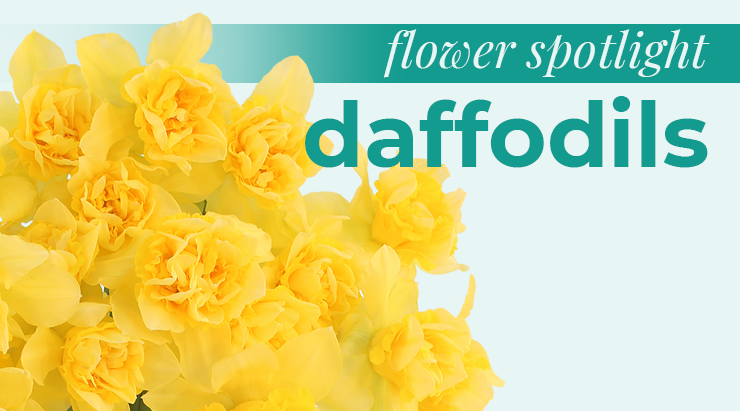
Daffodils are a part of the amaryllis family, native to northern Europe and grown in temperate climates around the world. With many varieties, daffodils make for a perfect spring bouquet! Keep reading to learn more about their origin, meaning, and some interesting facts!
Origin
Daffodils go by many names, including Narcissus pseudonarcissus, common daffodil, and trumpet narcissus. A staple spring flower, they are actually perennials and grow to about 16 inches in height. While daffodils are most commonly known for their bright yellow color, they can be found in white, pink, or orange as well. Daffodils have a central bell-shaped crown, or corona, that is frilled at the edges, giving it its trumpet shape that it’s most known for.
Facts
- Daffodil bulbs contain a compound called narciclasine, which scientists have discovered could be effective in treating brain cancer.
- They’re the national flower of Wales.
- Daffodil sap was prized in Ancient Rome because it was thought to have healing properties.
Meanings
Daffodils have symbolized new beginnings and rebirth throughout history. They’ve been associated with new beginnings and the coming of spring because they are one of the first perennials to bloom after the winter frost. Their cheerful yellow color is also a great representation of the spring season. Bright and colorful, daffodils make for a striking standalone flower or a beautiful addition to any bouquet. Be sure to ask your local florist to use daffodils the next time you send flowers!


 Find Your
Find Your 
Speak Your Mind